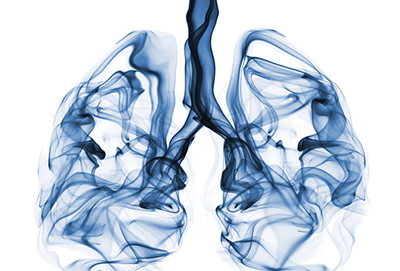
Source: www.healthscopemag.com
When it comes to respiratory diseases, almost everyone has heard of asthma, lung cancer, TB but not many non-medical people know about COPD or chronic obstructive pulmonary disease.
What is it?
Chronic Obstructive Pulmonary Disease is defined as a preventable and treatable respiratory disorder largely caused by smoking, which is characterised by progressive, partially reversible airflow obstruction and lung hyperinflation with significant systemic manifestations and co-morbid conditions. (Management of COPD Clinical Practice Guidelines, Second Edition, 2009).
Even the definition can leave most people breathless. Let’s take a closer look at it to better understand this condition.
- Preventable and treatable respiratory disorder largely caused by smoking– Smoking has been found to be so closely linked to this disease that it makes up part of the definition. Patients with COPD have structural changes and chronic inflammation of every part of their airways and lungs as a result from repeated injury and repair from inhalation of cigarette smoke and other poisonous substances.
- Progressive, partially reversible airflow obstruction and lung hyperinflation – These changes mentioned above result in excess mucus secretion, narrowing of the airways, collapse of small airways, trapping of air and improper gas exchange (we all know how important our lungs are to bring in oxygen to the bloodstream and get rid of carbon dioxide). In COPD patients these abnormalities are progressive, they get worse over time. Unlike asthmatics who can take medication which can reverse the airway obstruction they suffer, in COPD, the obstruction can only partially be reversed via medication, so it never quite returns back to normal.
- Significant systemic manifestations and co-morbid conditions– Patients with COPD often have systemic symptoms such as lethargy, weight loss, chest pain, swelling of ankles and fainting spells. There are a lot of other diseases associated with COPD, namely heart disease, osteoporosis, diabetes mellitus and lung cancer.
What are the symptoms of COPD?
- Breathlessness (dyspnoea)- the breathlessness worsens over months or years and is persistent
- Cough- may be intermittent initially but will often become daily. Usually associated with sputum/phlegm production.
- Chest tightness/wheezing
- Systemic symptoms- as mentioned previously
Patients with COPD may have episodes of these symptoms (known as exacerbations), with symptom free intervals progressively reducing.
Risk factors of COPD
- Genes- certain people are born with alpha-1 anti trypsin deficiency which causes a type of COPD called emphysema. This is a rare cause.
- Smoking- smoking causes COPD in individuals who are susceptible. Even second hand smoking has been found to cause COPD.
- Exposure to indoor & outdoor air pollutants and chemicals
How to reduce risk factors of COPD?
In two simple words- stop smoking. Smoking prevention has been proven to be the single most important and effective intervention in preventing COPD and worsening its progress in those already affected. Avoidance of other risk factors such as chemicals and pollutants is also advised.
How is COPD treated & managed?
Management of patients with COPD should prioritise patient education. Patients should understand their disease, its complications and how to avoid risk factors and triggers as well as how to best cope with the symptoms. Since patients with COPD are at higher risk for several types of lung infection, vaccines such as pneumococcal vaccine and influenza vaccine are recommended. COPD patients will often be given bronchodilators (puff) which will help decrease the airway obstruction and reduce breathlessness. They may also be treated with other types of medications including steroid inhalers, oral steroids and newer medications.
Take home message
Not all coughs and wheezing is asthma, there is a more sinister and worse condition known as COPD. It is a progressive lung disease, patients will find themselves more and more breathless, their coughing worsening from day to day. This disease is so closely related to smoking that the best thing any smoker can do to avoid it, improve or protect their family from it is to quit smoking today.
Dr Hidayah is the Chief Editor of The Malaysian Medical Gazette. She is currently pursuing her PhD.
References:
- Management of COPD Clinical Practice Guidelines, Second Edition, 2009
- Clinical Data and a Review of Real World Evidence in COPD, 2013
[This article belongs to The Malaysian Medical Gazette. Any republication (online or offline) without written permission from The Malaysian Medical Gazette is prohibited.]
